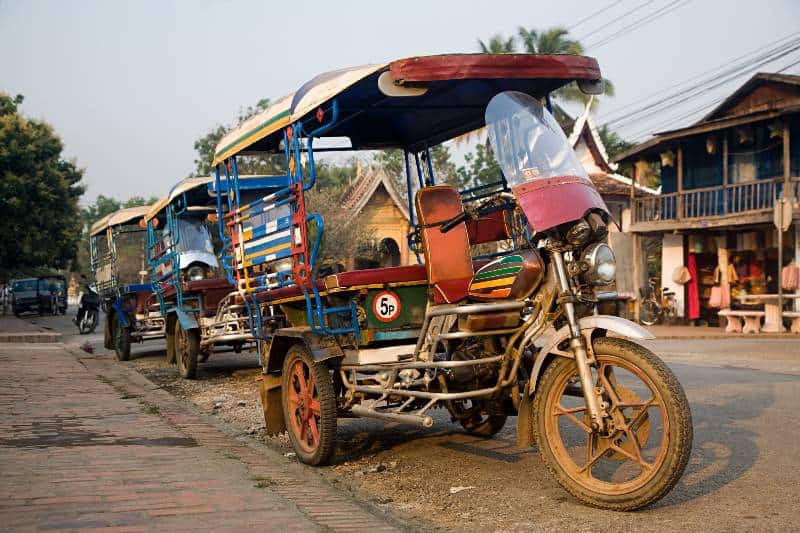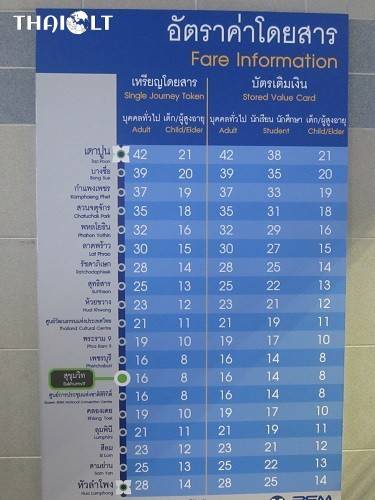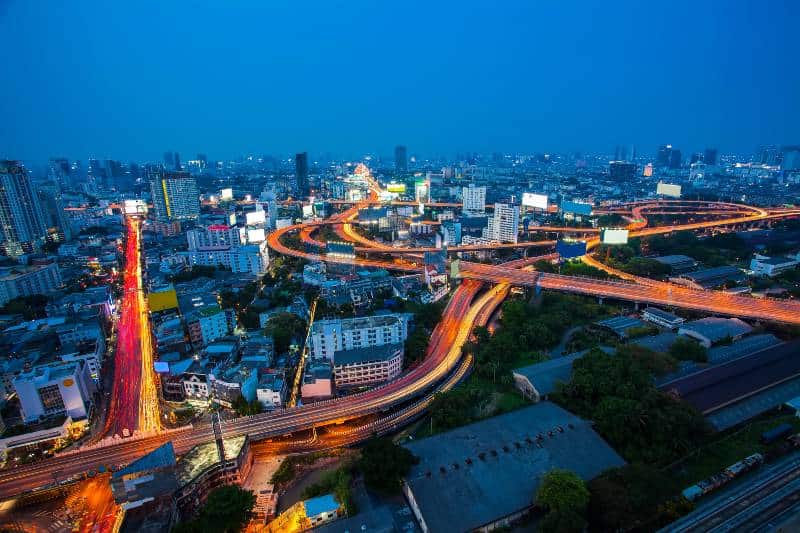How To Get Around Thailand – Complete Transportation Tips
If you’re looking for complete transportation in Thailand, you’ve come to the right place! In this blog post, we’ll cover everything from trains and local buses to taxis and tuk-tuks. We’ll also give you some tips on how to save money while traveling in Thailand. So whether you’re a first-time visitor or a seasoned pro, read on for all the information you need to get around Thailand like a pro!
If you’re staying in Bangkok, there’s also the option of taking the trains, buses, tuk-tuks, grab, and others to other cities in Thailand. Taking public transportation is one of the best ways to see what life is like outside of Bangkok; it’s also a great way to meet locals and get an authentic experience outside of the tourist spots!
Key Takeaways
- Utilize apps to get around Thailand (Waze, google apps, and grab)
- Bring your credit cards, but don’t rely on them—Thailand is cash-based, so make sure you have enough cash with you at all times.
- Don’t be afraid to try new things! Thailand is full of delicious food, and there are plenty of other activities to enjoy while you’re there too.

Getting Around Thailand
Thailand is a great place to visit, but it can be pretty intimidating at first. There are so many different modes of transportation and methods of getting around the country that it can be hard to know where to start.
Urban Transportation
Bangkok BTS Skytrain
Bangkok traffic may make moving around the city difficult and time-consuming. The BTS Sky Train, an elevated electric train, is frequently the fastest method to travel about. The service is inexpensive, dependable, and regular, and the vehicles are clean.
The city is served by two lines: the Sukhumvit line and the Silom line. They meet in Siam station, located in the heart of Bangkok’s business area.
Tickets may only be purchased in cash from ticket vending machines located at each BTS station. Fares vary depending on distance and range from 15 to slightly more than 50 Thai Baht (1.39 USD) one way.
Locate your destination station on the fare information board next to the ticketing machine. The one-way fare is indicated by the number in the circle next to the station name. Insert coins into the ticket machine and choose this fare. Proceed to the entrance gate and insert the ticket. The ticket is scanned and returned by the machine. Keep it with you and insert it again at the departure station.
The BTS ticket office offers several discount passes, including a one-day pass for 140 Baht, which allows unlimited travel on both BTS sky train lines on the day of purchase.
Other options for this are using the Bangkok mass transit authority, airport rail link (the underground MRT)
Bangkok MRT Subway
The Bangkok MRT underground network runs beneath Rama IV and Ratchadapisek Roads, the two main thoroughfares through central Bangkok. Although new lines and extensions are planned, the MRT Blue Line, which runs from Hua Lamphong to Bang Sue, is presently the only one. Trains run every 5 minutes during peak hours (from 7 a.m. to 9 a.m. and 4 p.m. to 7 p.m.) and every 7 minutes otherwise.
It is another addition to the booming Asian metropolis’s public transportation infrastructure. MRT, which is conveniently connected to other mass transport systems, is a handy way to move about Bangkok since it helps to avoid congested traffic in Thailand’s capital. The MRT connects central Bangkok to significant sections of the city, making it ideal for exploring Bangkok.
The Bangkok MRT ticket for a Single Travel Ticket, which is valid for a single journey, varies depending on the destination, starting at 16 Baht, rising to 42 Baht per journey on one line, and reaching 70 Baht if you change lines.
The actual Bangkok MRT fare for your trip can be found using the Online MRT Fare Calculator or on the station’s board (see below).

Taxi
Yellow/green and pink are the most popular hues of Bangkok taxis. Taxis in vivid blue, green, red, yellow, orange, pink/white, or white are also common.
There is no difference in the color of the Bangkok cab you choose because all of them have the same metered fare.
Checking the taxi’s front window can tell you whether it is available or occupied. If the LED sign with three red Thai symbols on the front glass of the taxi is turned on (see below), the taxi is free to use. However, before you get inside the car, ask the driver if he would take you to your preferred destination, as it may not be on his route and he may refuse to take you there. Simply stop another free cab in such a circumstance.
Grab (via App)
Getting around Thailand can be tricky. The country is huge and the public transportation options are… less than stellar. But there are a few ways to get around Thailand without breaking the bank or causing yourself undue stress.
The easiest way to get around Thailand is with Grab, which is an app that you can use to call a taxi or ride-share service. You can book a cab or a carpool right from your phone, and you can even pay for it with cash in advance, which means you don’t have to worry about carrying around cash when you’re on the road.
Bolt (via App)
If you’re looking to get around in Thailand, Bolt is a fantastic option.
The idea behind Bolt is that it’s an app that lets you take taxis and other forms of transportation directly from your phone. So, instead of having to call or wait in line at a taxi stand, you can just pull out your phone and order yourself a ride—and it will come right to you!
In addition to taxis, Bolt also offers Uber-like services for motorbike taxis and even electric scooters. You can even pay with cash if you don’t have a smartphone!
Bolt is definitely worth checking out if you’re planning on doing any traveling in Thailand.
Songtaew
If you’re planning on going anywhere outside of Bangkok, you’ll probably have to take a songtaew. Songtaews are essentially minivans that can fit anywhere from 10-20 people. They’re usually painted bright colors and are often decorated with pictures of the driver’s children or other family members. They’re also sometimes decorated with advertisements for products or services, but these ads will be in Thai so you won’t necessarily understand what they’re advertising unless you speak the language (and even if you do speak Thai).
They’re cheap and convenient, but they can be difficult to figure out at first. You can either stand up inside the van or sit down on one of the benches along the side of the van. If there aren’t enough seats inside, then people will stand along the sides of the van as well (for example, if there were 15 passengers onboard and only 12 seats available).
You’ll want to keep your bags near you at all times because there isn’t much space for them inside or outside of the van. If there are no seats available inside and everyone is standing up, then it’s best not to bring any bags with you at all—simply put them in between your legs while standing up!
Tuk Tuks
If you’re staying in Thailand for a while, chances are good that you’ll end up taking a tuk-tuk at some point.
Tuk tuks are the main mode of transportation in most cities in Thailand, but they’re also pretty common in other countries as well. They’re basically motorized rickshaws with wheels and a covered cab. You can find them parked along the streets.
Tuk tuks are relatively cheap—you can usually get anywhere within Bangkok for about $1 or less. If you’re visiting a smaller city, however, expect to pay more per ride because they aren’t as convenient as taxis or other forms of public transportation.
The best thing about riding in tuk-tuks is that they’re so much fun! These little guys have character and personality—and if you’re lucky enough to find one who speaks English well enough to chat with him or her about life outside of Thailand (or even inside), then your trip just got even more interesting!
Motorcycle Taxis
Motorcycle taxis are one of the most popular ways to get around in Thailand. They’re cheap, easy to find, and they’re everywhere—you can flag one down on any street corner in Bangkok or Chiang Mai, and they’ll take you wherever you need to go.
Metro and Public Bus
Because of the convenience and low cost of songtaews, taxis, tuk-tuks, and motorbike taxis, common modes of public transportation such as the metro and public buses are not often used in Thailand.
Bangkok is the lone exception, where metro and buses are required due to the sheer amount of people living and traveling in this vast city.
There are numerous bus operators in Bangkok, and most trips cost less than ten Baht.
Because there is no defined norm, simply ask around in your neighborhood when and when the public bus departs.
Canal Taxi
In such a huge city like Bangkok, getting around can be an exhausting experience. Luckily, people have been taking advantage of the canals through the capital from Khlong Saen Saeb and turned it into a great way to cover ground effectively: The Canal taxi boats.
The Khlong Canal Taxis are a popular mode of transport for locals in Bangkok. They’re big, dirty and noisy, but also much fun.
Long Distance Transportation
Air Travel
If you have time on your hands and are looking for a more convenient way of getting from point A to point B, like domestic flights, then consider flying. Air travel is the fastest way to get from one city to another in Thailand. There are several airlines that service Thailand, including Thai Airways, Thai Lion Air, Bangkok Airways, and Nok Air.
All four offer different types of packages at various price points depending on how long you plan to stay in the country or how often you plan on flying out of it. You can also choose between first-class and economy-class seating options if available—first-class seats tend to be more comfortable but also cost more money than economy seats.
Train
The most popular way to get around Thailand is by train. There are several different rail lines, and all of them connect with each other. The most popular tourist destinations are Bangkok and Chiang Mai, but there are also trains that go all over the country.
The downside to this method of transportation is that it is not cheap, especially if you have a lot of luggage or are traveling with children who need to be carried on board. However, if you plan ahead and purchase your train tickets early, you can get discounts and save money on your travel expenses!
Bus
Bangkok’s bus lines are extensive, which can be perplexing to first-time visitors. It’s an excellent idea to keep an MBTA map on hand (available at most bus terminals). When in doubt, ask a local or a police officer for help, or dial 184 (BMTA Hotline).
Except for all-night buses, most buses run every day between 5 a.m. and 11 p.m. Regular buses are around 8 baht, but highway buses start at 10 baht. Air-conditioned (cream-blue) buses start at 12 baht (depending on the distance traveled). All-night buses (cream-red) cost approximately 9.50 baht. EURO II buses (yellow-orange) range in price from 13 to 25 baht, depending on the distance traveled.
Ferries
Boats are an excellent method to navigate Bangkok’s famous Riverside district, which is home to numerous historical sites, temples, and architecture. They’re also fantastic for exploring the khlongs (canals) for a peek of old Bangkok. Several types of boats (express boats, river taxis, and longtail boats) run up and down the Chao Phraya River, linking with the local suburbs on the Thonburi side and along the river, while ferries cross at various spots.

Additional Tips for Transportation in Thailand
Research the Price of a Journey
If you’re traveling in Thailand, it’s important to know the price of a journey before you set out. You can find this information online or at the station.
You should also check out what kind of transportation is available from one place to another. There are many options available and you will want to choose carefully. Think about how comfortable each option is for you, as well as how much it costs.
Keep Your Belongings Safe
If you are traveling in Thailand, it is important to keep your belongings safe. You should always be aware of your surroundings and not leave anything valuable unattended. You should also make sure that you do not open your bag to anyone other than yourself.
If you do have a problem with theft or pickpockets, there are many precautions that you can take to make sure that your belongings are safe. One of the best things that you can do is avoid wearing expensive jewelry or watches in public places where there may be crowds. Another thing that can help is making sure that all of your zippers are closed securely so that no one can reach into the pockets of your clothes without you noticing it first!
Make sure taxis always turn on their meter before going
Thailand is a beautiful country with a rich history and culture. But like any other country in the world, it has its share of problems. One of these is the lack of consistency in taxi drivers’ behavior.
While there are some good taxi drivers out there, many of them will try to rip you off by charging an inflated rate. To avoid this, make sure they turn on their meter before you get into the car. Most taxis have an easy-to-read digital display that shows how much each ride costs.
Be aware of Ripp-Off Scheme by TukTuk & Taxi driver
Taxi and tuk-tuk ride scams in Bangkok are a continuous problem for backpackers and travelers, causing much stress and dissatisfaction for many individuals visiting thai cities. Here are some of Thailand’s most vexing taxi and tuk-tuk issues, and how to prevent them.
Taxi drivers are supposed to charge by the meter, but almost all of them refuse to do so and drive off with people in their cabs anyway.
The only way to get revenge is by taking down the driver’s information and complaining to their employer—but that’s a lot of trouble for something so petty. Instead, simply be aware of these two facts the next time you order a cab, so you can demand fair and legal treatment.
Apps to Consider for Travelling in Thailand
Google Maps
Google Maps is a great app to use when you’re traveling in Thailand. It offers a lot of information about things like where you’re going, how to get there, and what’s nearby. You can also use it to get directions for public transportation and schedule times for pickup or drop-off.
The best thing about Google Maps is that it can show you the routes that are easiest to walk rather than just giving you options from point A to point B. This means that if you want to get somewhere without a car or taxi, but don’t feel like walking all day, this is an app for you!
Apple Maps
Apple Maps is a great app to use while you’re traveling in Thailand. It’s got all the information you need to get around, including public transport options and directions.
If you’re worried about being able to understand Thai street signs, don’t be! Apple Maps has voiceover capabilities that will read out the names of streets and locations in English for you. You can also type in your destination address if you prefer.
This app will help you find the best places to eat and drink, as well as all the attractions and landmarks worth checking out while in Thailand.
Waze
Waze is a free app that allows you to take the guesswork out of driving in unfamiliar places. With Waze, you can see other drivers’ real-time reports about accidents and traffic jams, so you can avoid them on your way to your destination.
If you’re not familiar with Waze, here’s how it works: download the app, enter your destination address and hit “Start.” Then drive! When other drivers nearby report accidents or traffic jams on their route (or if there are police officers out), Waze will alert you with a pop-up message on your screen. You can then reroute yourself with just one click to avoid the trouble spot—and keep yourself from getting stuck in traffic unnecessarily!
BTS/MRT Apps
You’ve probably heard of the BTS and MRT, but do you know how to use them?
The BTS and MRT (Bangkok Mass Transit System) are two of the most popular ways to get around Bangkok. They’re fast, cheap, and they can take you anywhere in the city—but only if you know how to use them.
We’ve put together a list of our top apps for using the BTS/MRT, click here!
Transportation In Thailand FAQs
What is the best way to get around in Thailand?
There are several ways to get around in Thailand. If you’re sticking to the major cities, train travel and buses are convenient options; tuk-tuks (three-wheeled taxis) can be seen on most streets of Bangkok; and island hopping is best done by boat.
Is taxi cheaper in Thailand?
Taxi prices in Thailand are much lower than they are in most western countries. The starting fare is only 35 baht and fares increase by a moderate amount depending on the distance traveled.
What is the cheapest way to get around Thailand?
Thailand buses are suitable for low-cost intercity travel. Buses are often faster and cleaner than trains and can take you directly to any province in Thailand. Thailand has a vast range of bus routes, from small towns to larger cities, providing the most options when touring the country.
What are bike taxis called in Thailand?
In Thailand, any three-wheeler, whether motorized or not, is referred to as a samlor (Thai:, which literally means “three wheels”), including pedicabs, motorbikes with attached vending carts or sidecars, and so on. Samlor is another name for the driver.
Do you tip taxi in Thailand?
In Thailand, there is no requirement or need to tip a cab driver. However, we’ve all had nightmarish taxi rides while on vacation, so finding a friendly, safe driver can be a blessing. In that scenario, round up the meter fare to the nearest 50 or 100 Baht.
Conclusion
These are just a few of the ways you can get around Thailand – there are many more options depending on your budget and where you’re going. Whichever way you choose to travel, make sure you download the right apps to help you along the way! For more information about living in Thailand, subscribe to our newsletter or check out our website for more articles like this one.






